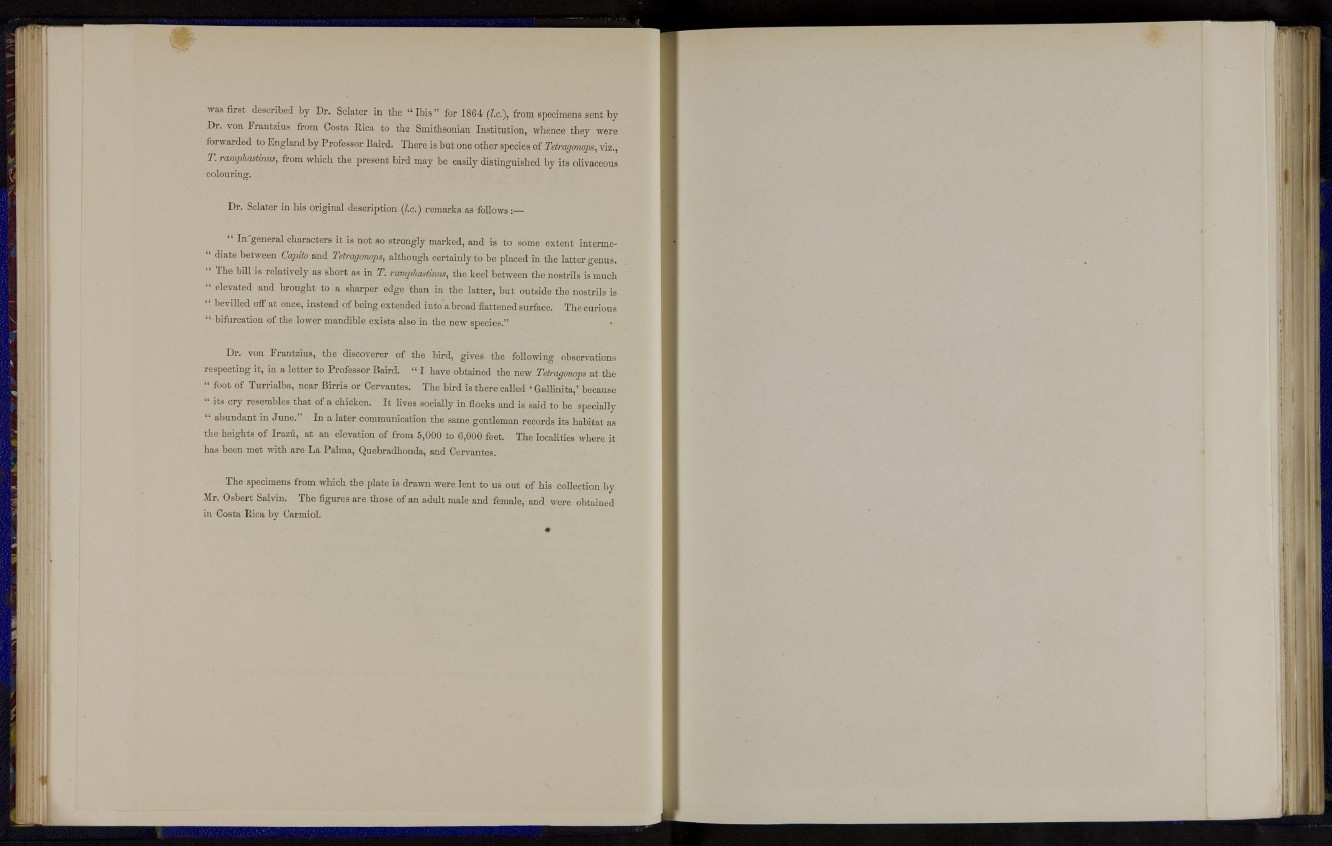
was first described by Dr. Sclater in the " I b i s " for 1864 (I.e.), from specimens sent by
Dr. von Frantzius from Costa Rica to the Smithsonian Institution, whence they were
forwarded to England by Professor Baird. There is but one other species of Tetragonops, viz.,
T. ramphastinus, from which the present bird may be easily distinguished by its olivaceous
colouring.
Dr. Sclater in his original description (I.e.) remarks as follows:—
" I n ' g e n e r a l characters it i s n o t so strongly marked, and is to some extent interme-
" diate between Capito and Tetragonops, although certainly t o be placed in the l a t t e r genus.
" The bill is r e l a t i v e ly as short as in T. ramphastinus, the keel between the nostrils is much
" elevated and brought to a sharper edge than in the latter, but outside the nostrils is
1 1 bevilled off at once, instead of being extended into a broad flattened surface. The curious
" bifurcation of the lower mandible exists also in the new species."
Dr. von Frantzius, the discoverer of the bird, gives the following observations
respecting it, in a l e t t e r to Professor Baird. " I have obtained the new Tetragonops at the
" foot of Turrialba, near Birris o r Cervantes. The b i r d i s t h e r e called ' Gallinita,' because
" its cry resembles t h a t of a chicken. It lives socially in flocks and is said t o be specially
" abundant in J u n e . " In a l a t e r communication the same gentleman records i t s habitat as
t h e heights of Irazii, at an elevation of from 5,000 to 6,000 feet. The localities where it
has been met with are La Palma, Quebradhonda, and Cervantes.
The specimens from which the plate is drawn were lent to us out of his collection by
Mr. Osbert Salvin. The figures are those of an adult male and female, and were obtained
in Costa Rica by Carmiol.